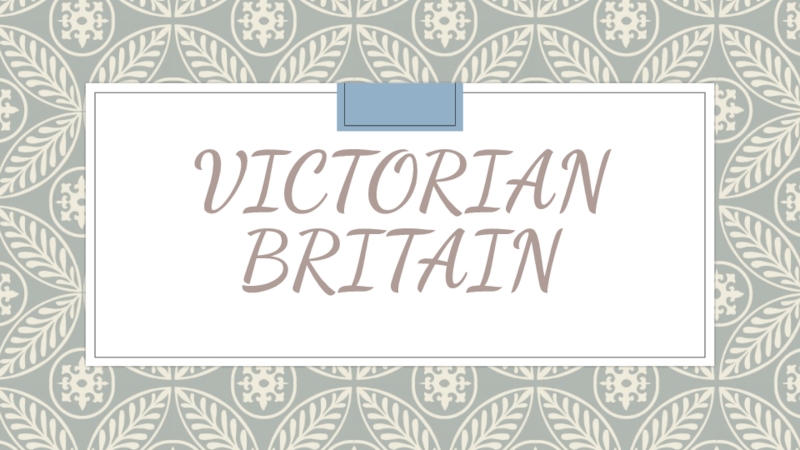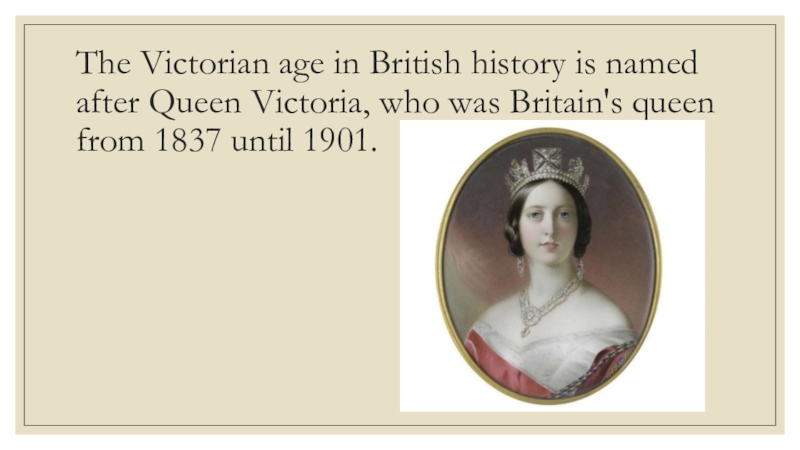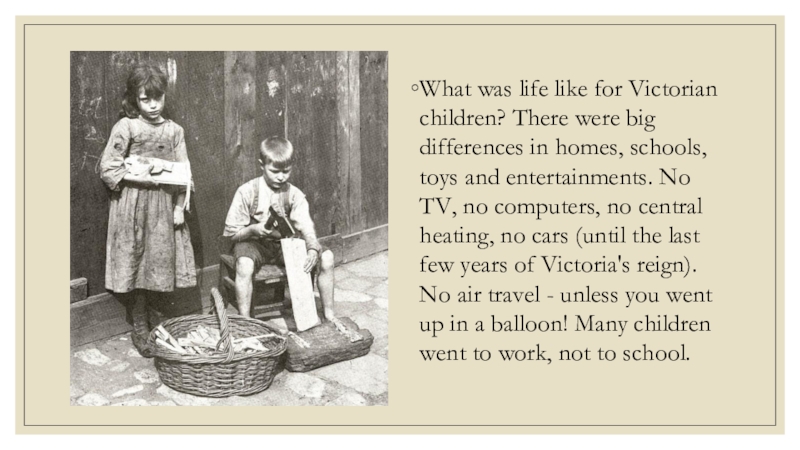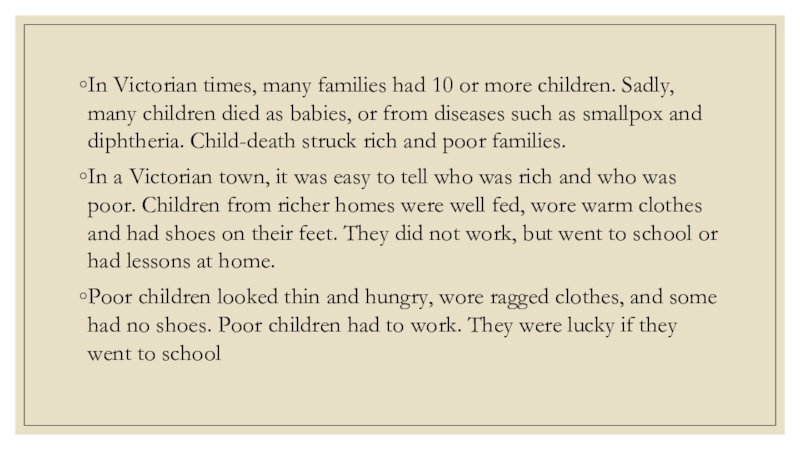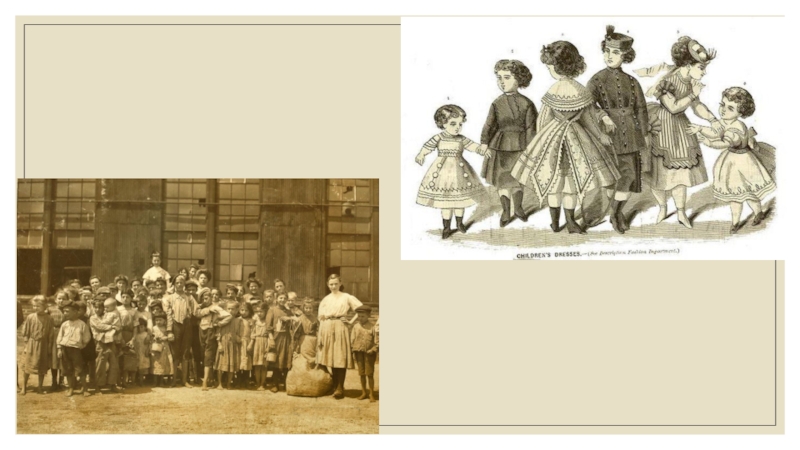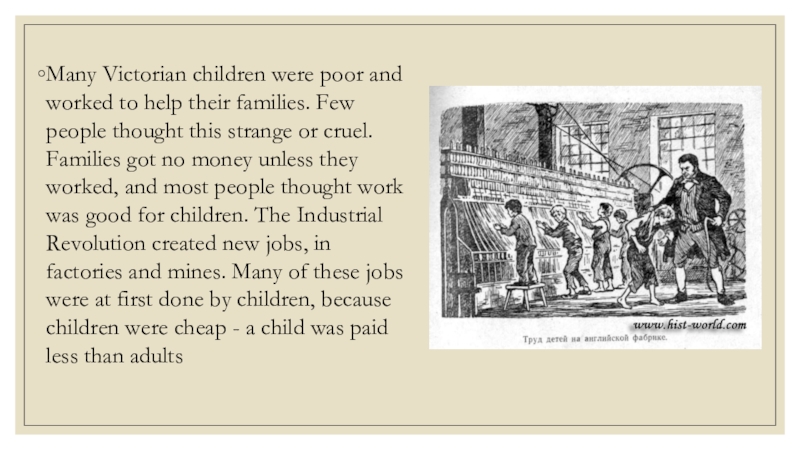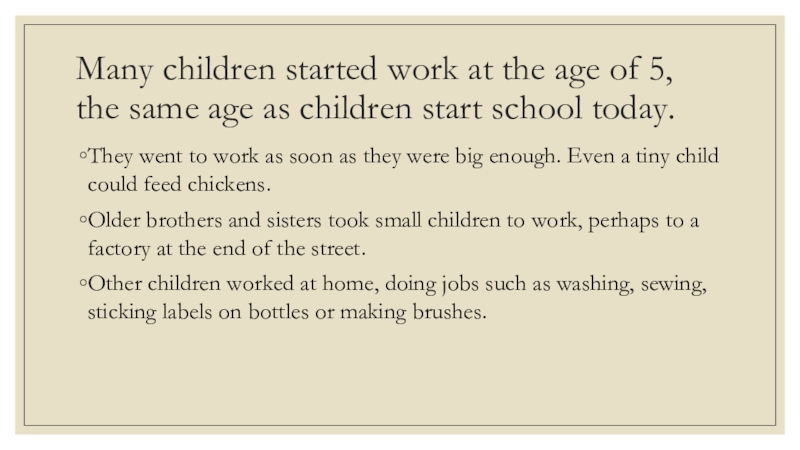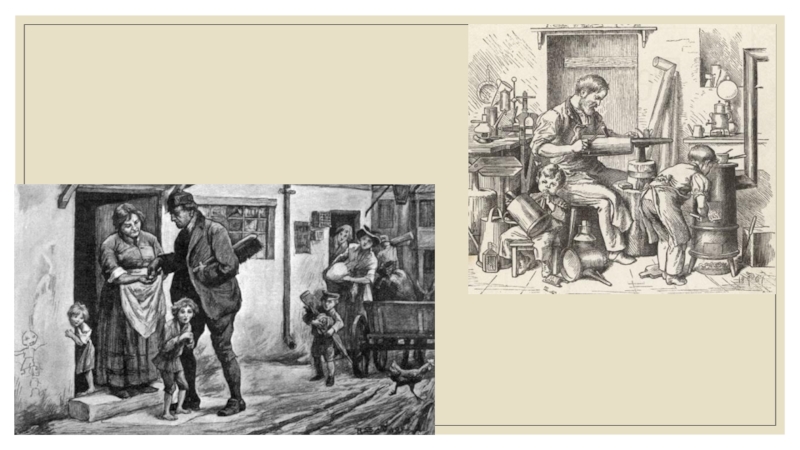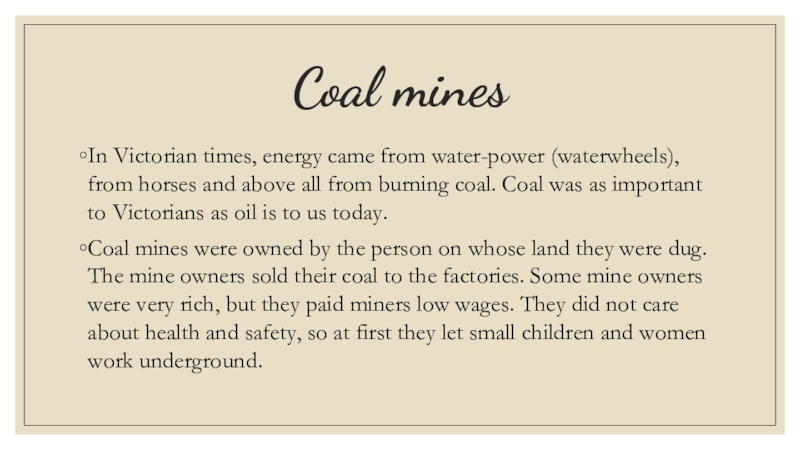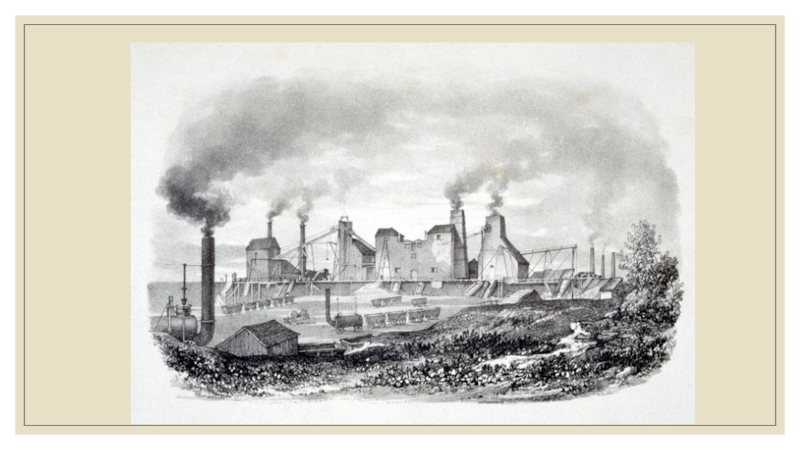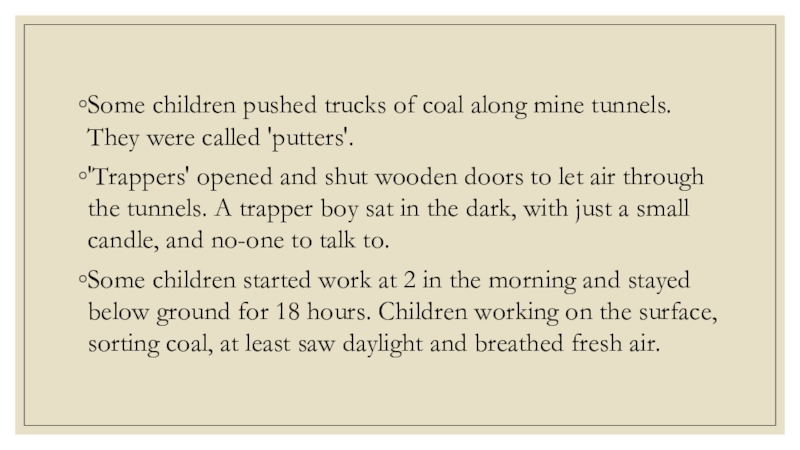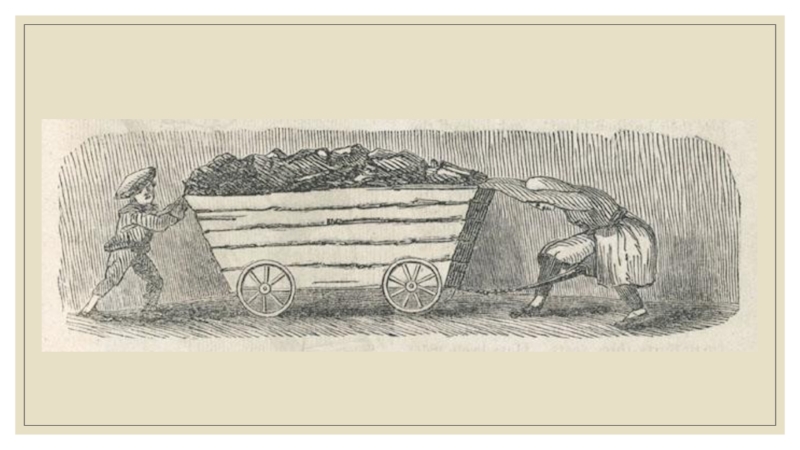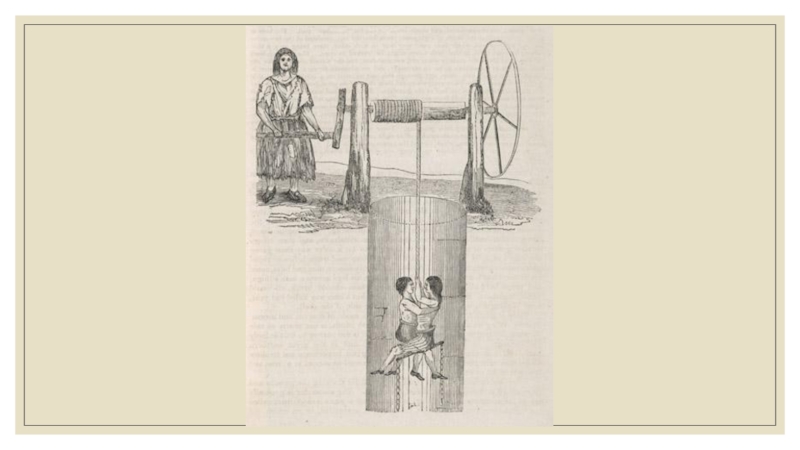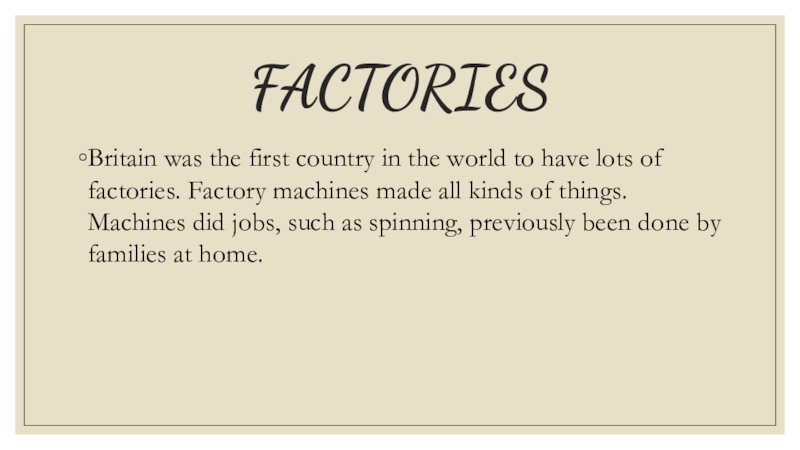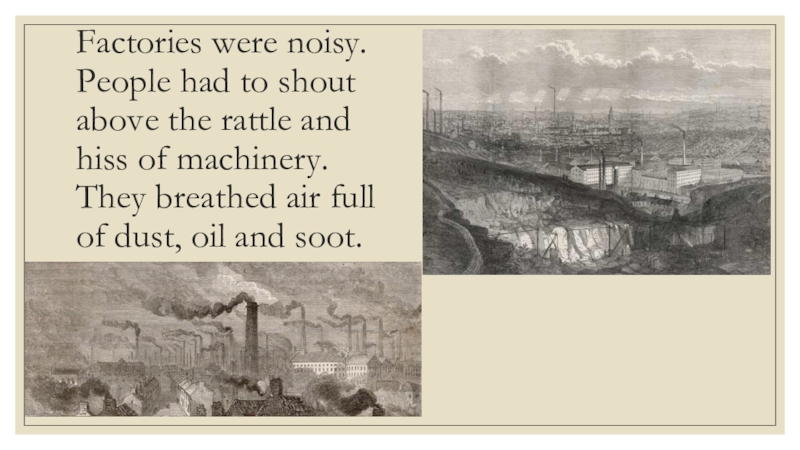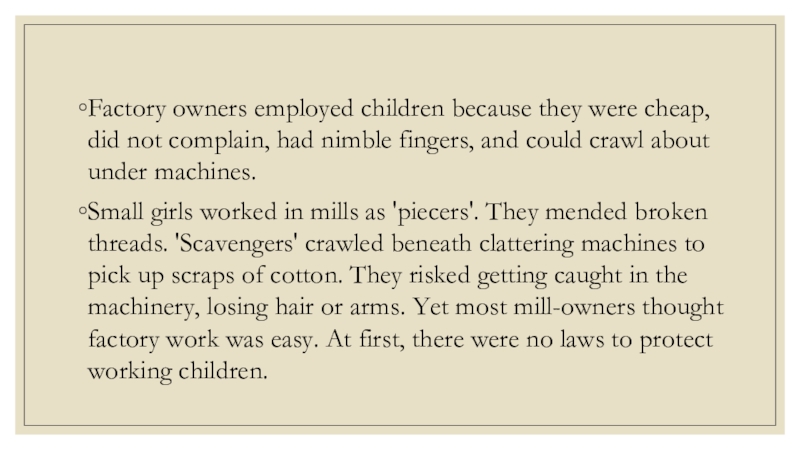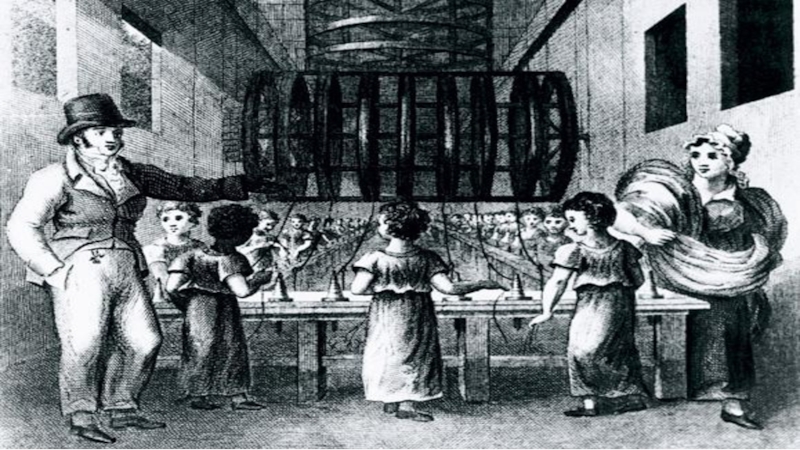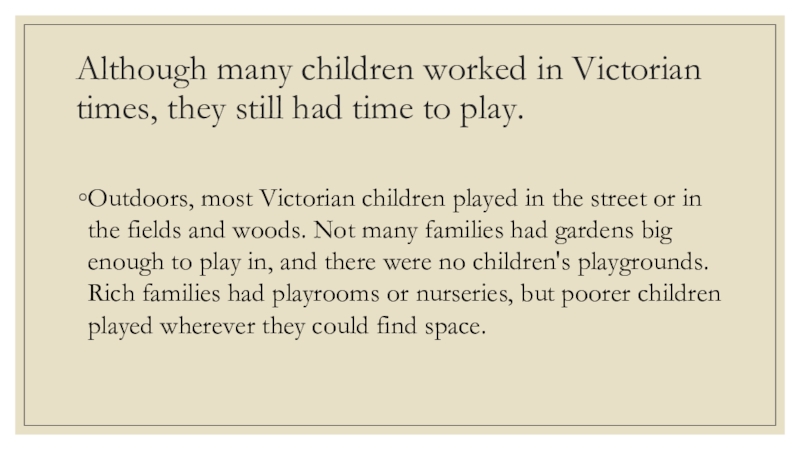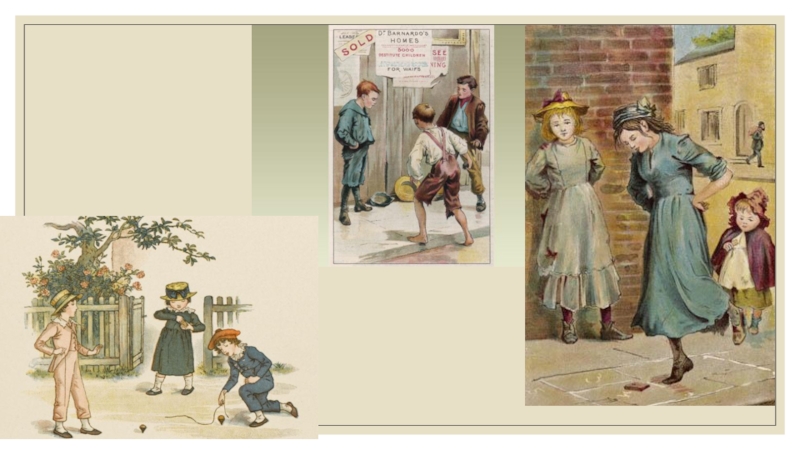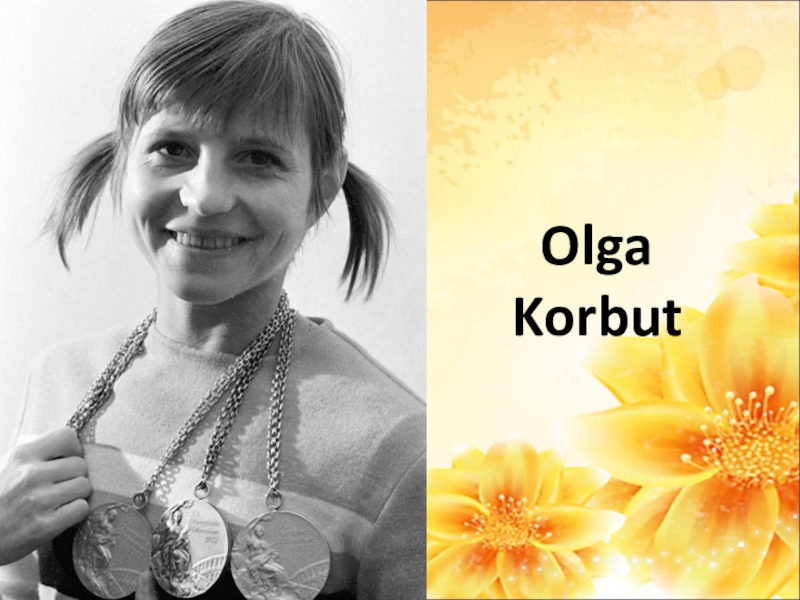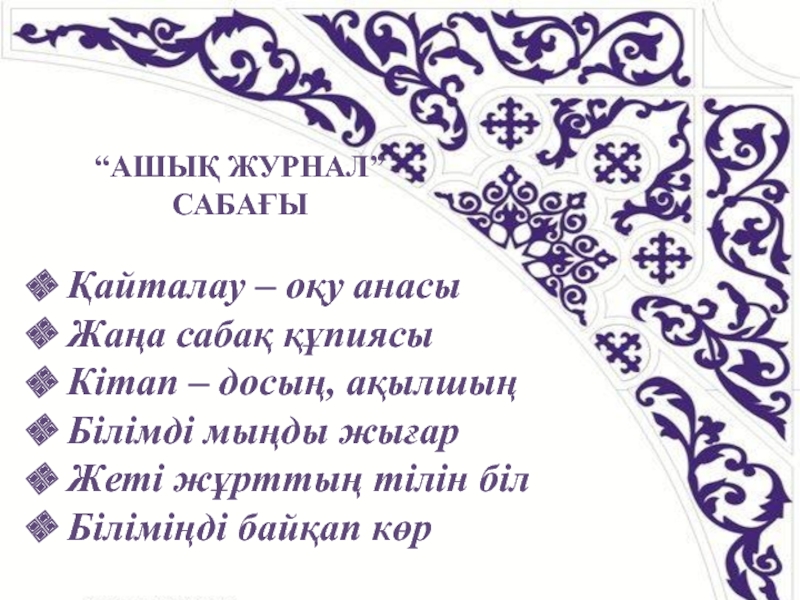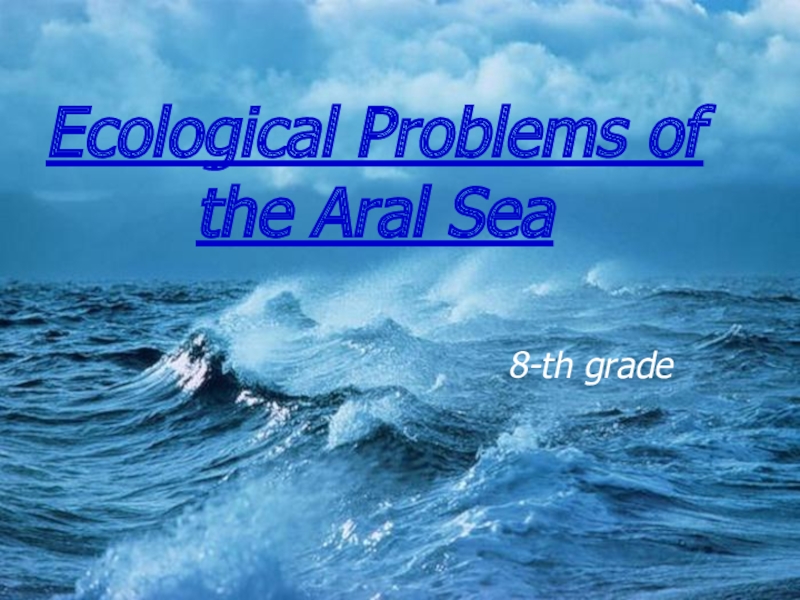- Главная
- Разное
- Образование
- Спорт
- Естествознание
- Природоведение
- Религиоведение
- Французский язык
- Черчение
- Английский язык
- Астрономия
- Алгебра
- Биология
- География
- Геометрия
- Детские презентации
- Информатика
- История
- Литература
- Математика
- Музыка
- МХК
- Немецкий язык
- ОБЖ
- Обществознание
- Окружающий мир
- Педагогика
- Русский язык
- Технология
- Физика
- Философия
- Химия
- Шаблоны, фоны, картинки для презентаций
- Экология
- Экономика
Презентация, доклад к уроку в 7 классе Victorian Bratain
Содержание
- 1. Презентация к уроку в 7 классе Victorian Bratain
- 2. The Victorian age in British history is
- 3. What was life like for Victorian children?
- 4. In Victorian times, many families had 10
- 5. Слайд 5
- 6. Many Victorian children were poor and worked
- 7. Many children started work at the age
- 8. Слайд 8
- 9. Coal minesIn Victorian times, energy came from
- 10. Слайд 10
- 11. Some children pushed trucks of coal along
- 12. Слайд 12
- 13. Слайд 13
- 14. FACTORIES Britain was the first country in
- 15. Factories were noisy. People had to shout
- 16. Factory owners employed children because they were
- 17. Слайд 17
- 18. Although many children worked in Victorian times,
- 19. Слайд 19
Слайд 2The Victorian age in British history is named after Queen Victoria,
Слайд 3What was life like for Victorian children? There were big differences
Слайд 4In Victorian times, many families had 10 or more children. Sadly,
In a Victorian town, it was easy to tell who was rich and who was poor. Children from richer homes were well fed, wore warm clothes and had shoes on their feet. They did not work, but went to school or had lessons at home.
Poor children looked thin and hungry, wore ragged clothes, and some had no shoes. Poor children had to work. They were lucky if they went to school
Слайд 6Many Victorian children were poor and worked to help their families.
Слайд 7Many children started work at the age of 5, the same
They went to work as soon as they were big enough. Even a tiny child could feed chickens.
Older brothers and sisters took small children to work, perhaps to a factory at the end of the street.
Other children worked at home, doing jobs such as washing, sewing, sticking labels on bottles or making brushes.
Слайд 9Coal mines
In Victorian times, energy came from water-power (waterwheels), from horses
Coal mines were owned by the person on whose land they were dug. The mine owners sold their coal to the factories. Some mine owners were very rich, but they paid miners low wages. They did not care about health and safety, so at first they let small children and women work underground.
Слайд 11Some children pushed trucks of coal along mine tunnels. They were
'Trappers' opened and shut wooden doors to let air through the tunnels. A trapper boy sat in the dark, with just a small candle, and no-one to talk to.
Some children started work at 2 in the morning and stayed below ground for 18 hours. Children working on the surface, sorting coal, at least saw daylight and breathed fresh air.
Слайд 14FACTORIES
Britain was the first country in the world to have
Слайд 15Factories were noisy. People had to shout above the rattle and
Слайд 16Factory owners employed children because they were cheap, did not complain,
Small girls worked in mills as 'piecers'. They mended broken threads. 'Scavengers' crawled beneath clattering machines to pick up scraps of cotton. They risked getting caught in the machinery, losing hair or arms. Yet most mill-owners thought factory work was easy. At first, there were no laws to protect working children.
Слайд 18Although many children worked in Victorian times, they still had time
Outdoors, most Victorian children played in the street or in the fields and woods. Not many families had gardens big enough to play in, and there were no children's playgrounds. Rich families had playrooms or nurseries, but poorer children played wherever they could find space.
